I’ve been exploring different text to speech tools around to make my life a bit easier when I wanted to listen to large amounts of text. But finding the best text to speech reader is difficult, many of them sound robotic and lack emotional nuance, which makes your listening experience off-putting, and if you find a good tool, it will be either expensive or hard to use. So I’ve tested many tools and put together this article based on all the common problems many face, so that you don't have to end up confused any longer.
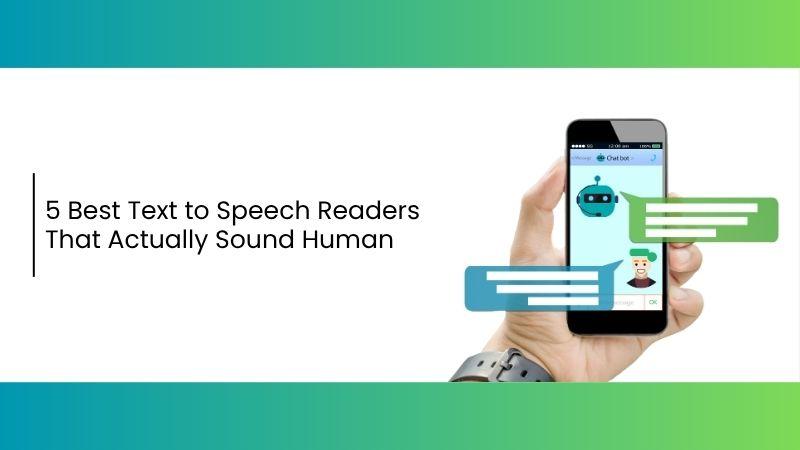
5 Best Text to Speech Readers
Choosing the best text to speech reader is key forproductivity, content creation, or accessibility. Here, I’ll introduce five of the best TTStools that offer natural voices, user-friendly features, and reliability. Let’s explore these top options to help you find the perfect fit for your needs.
Natural Reader
From my experience, Natural Reader stands out for its simplicity and effectiveness. When I first used it, I was impressed by how easy it was to start listening to text immediately. The voices sound human, and it’s perfect for reading articles, documents, or even books aloud.
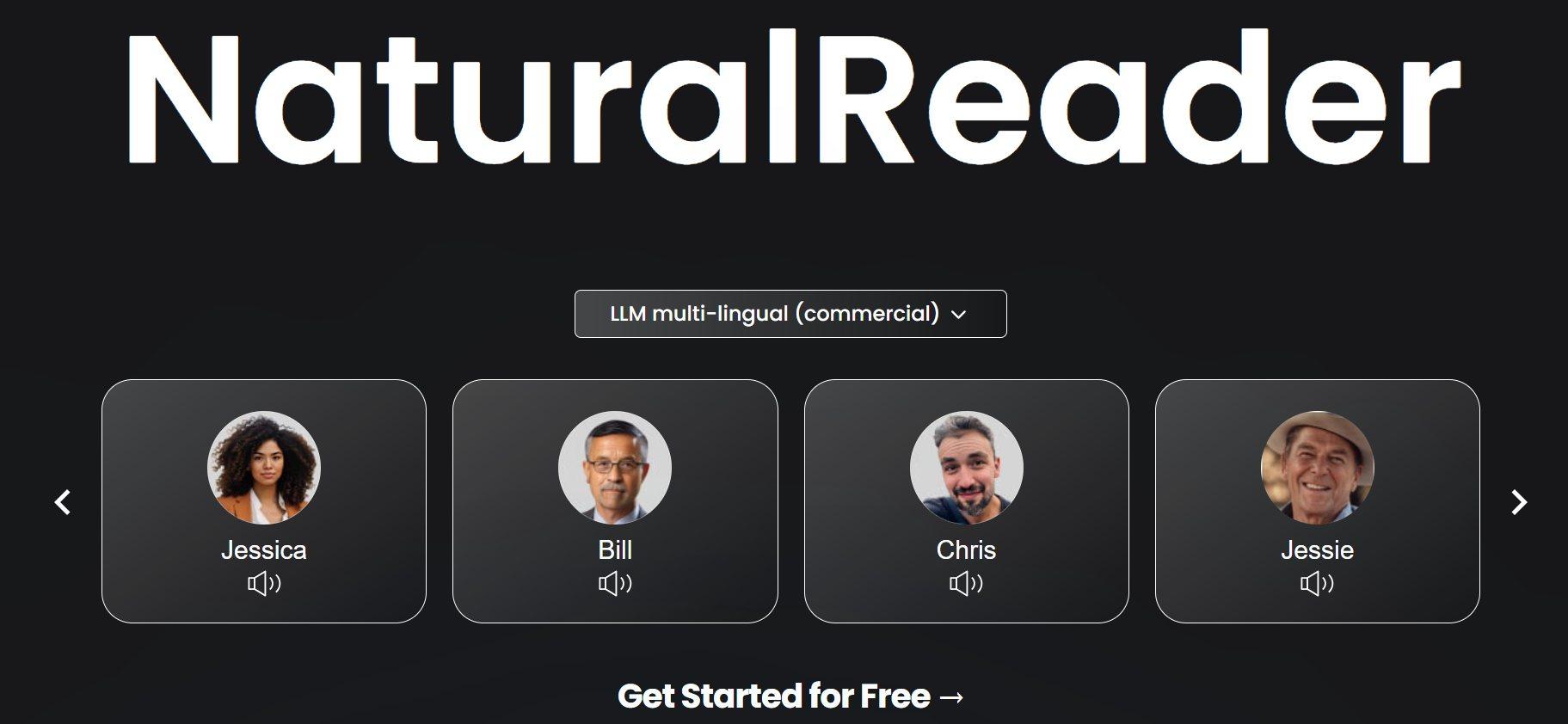
I especially appreciated the free version, which provides access to decent voice options. With over 20 languages supported, it’s versatile enough for a global audience. Whether I’m reading an e-book or reviewing educational material, Natural Reader has been a reliable companion, offering clarity and smooth reading.
Pros:
Free plan available with essential features
High-quality, natural-sounding voices
Supports 20+ languages
Great for casual and educational use
Cons:
Premium features require a paid plan
Limited voice customization in free version
Best For:
Natural Reader is ideal for those who need an easy-to-use, no-fuss tool for casual reading, educational purposes, or accessibility. If you just want something that works right out of the box without complicated setup, this is a great choice. It’s perfect for students, educators, and anyone who enjoys consuming content via audio.
Speechify
Speechifyis a game-changer when it comes to TTS tools, and I quickly became a fan of its incredibly natural, human-like voices. It was a huge improvement compared to other readers I had used in the past. The ability to switch between different voices, accents, and even speech speeds makes it very versatile. You can even use celebrity voices for it.
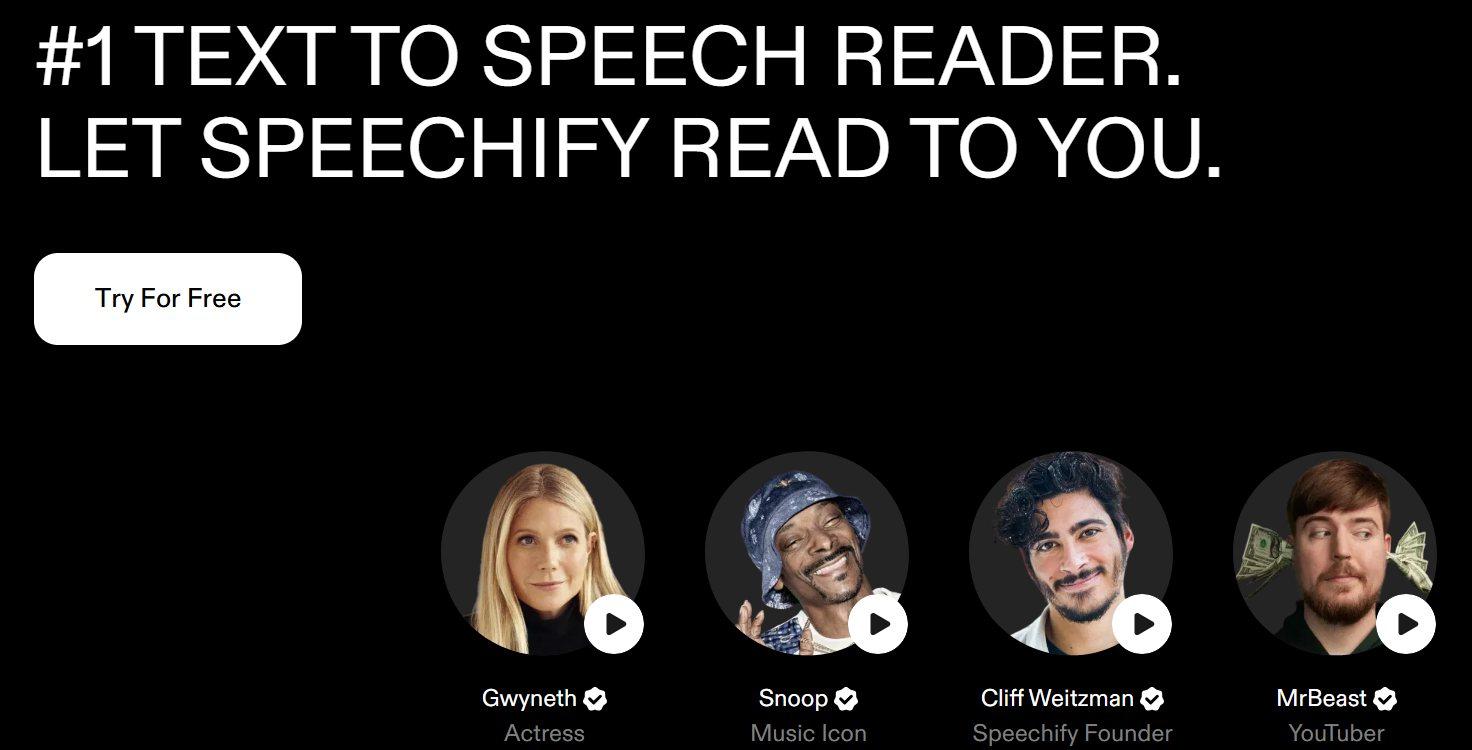
It’s a standout for productivity, especially when I need to listen to long texts, like research papers or emails, while multitasking. Its mobile app has allowed me to take my reading on the go, whether commuting or running errands. If you need a tool that’s top-notch for both quality and mobility, Speechify has you covered.
Pros:
Premium, human-like voices
Available on mobile devices for listening on the go
Supports over 30 languages
Works well for longer listening sessions
Cons:
The free version offers limited access
It can get expensive for full access
Best For:
Speechify is ideal for people who need to maximize their productivity on the go. Whether you’re a professional who needs to stay on top of emails, a student absorbing long textbooks, or someone who loves to listen to articles, Speechify will improve your listening experience. It’s especially perfect for anyone who values seamless integration with their daily routine, with mobile and desktop functionality.
TTSReader
TTSReader was a pleasant surprise for me when I needed a quick, no-frills TTS tool. It’s completely free, and that’s something I really appreciate. The voices aren’t as advanced as some paid options, but for basic reading tasks, it’s surprisingly effective.
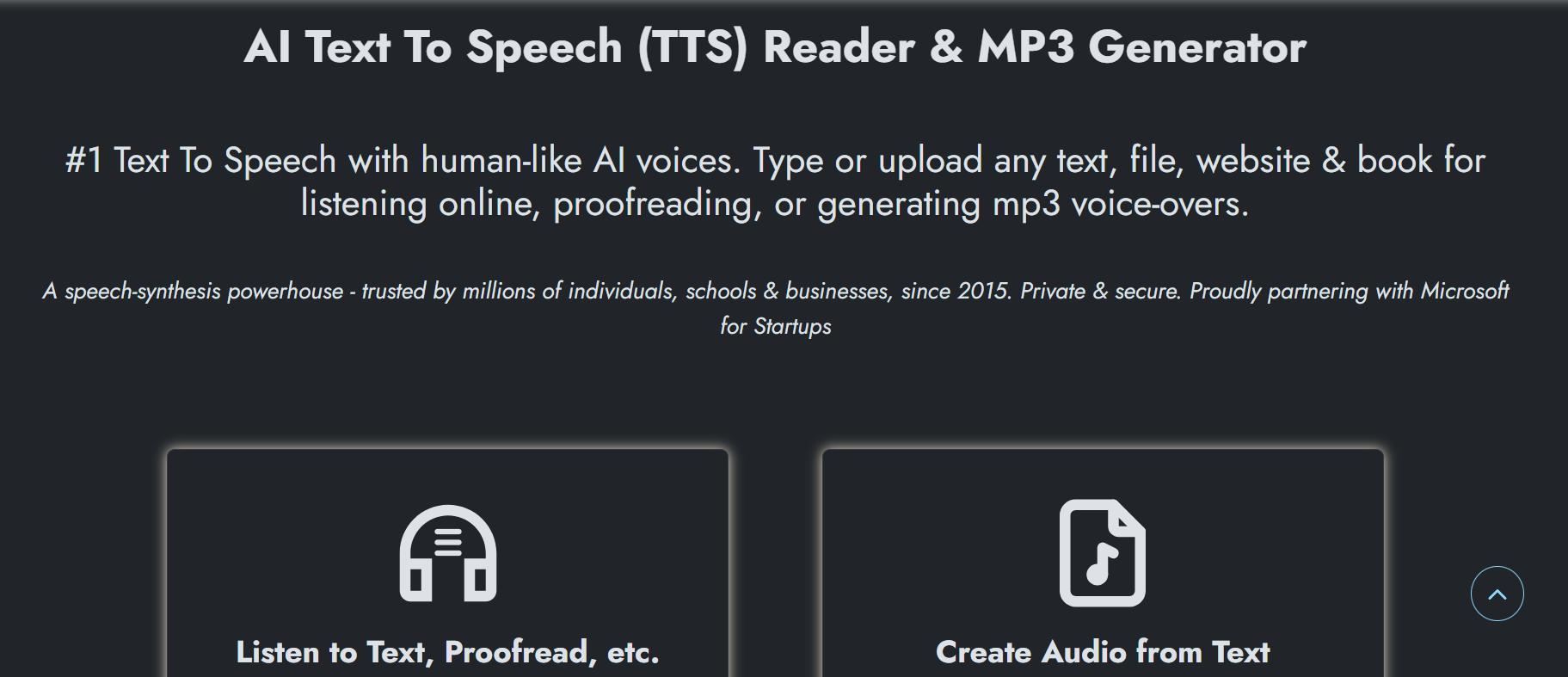
The tool works right out of the browser, which is so convenient when I don’t feel like downloading or installing anything. It’s perfect for situations where you just need to quickly listen to a block of text without fussing over customization. I’ve found it especially useful for short articles and emails, where I don’t need much more than clear, accurate reading.
Pros:
Free to use with no sign-up
Simple interface, no downloads required
Good for quick reading tasks
Cons:
Limited voice selection and less natural sound
Not as feature-rich as paid tools
Best For:
TTSReader is perfect for people who need something quick and uncomplicated. If you just want to listen to short texts while working on something else or don’t need a lot of customization, this tool is great. It’s best for casual users, students, or anyone who needs to quickly consume text without a lot of bells and whistles.
Murf AI
When I first tested Murf AI, I could immediately see why it's a go-to choice for professionals. The voice quality is exceptional, so realistic that I’ve used it for a number of projects, from voiceovers to presentations.
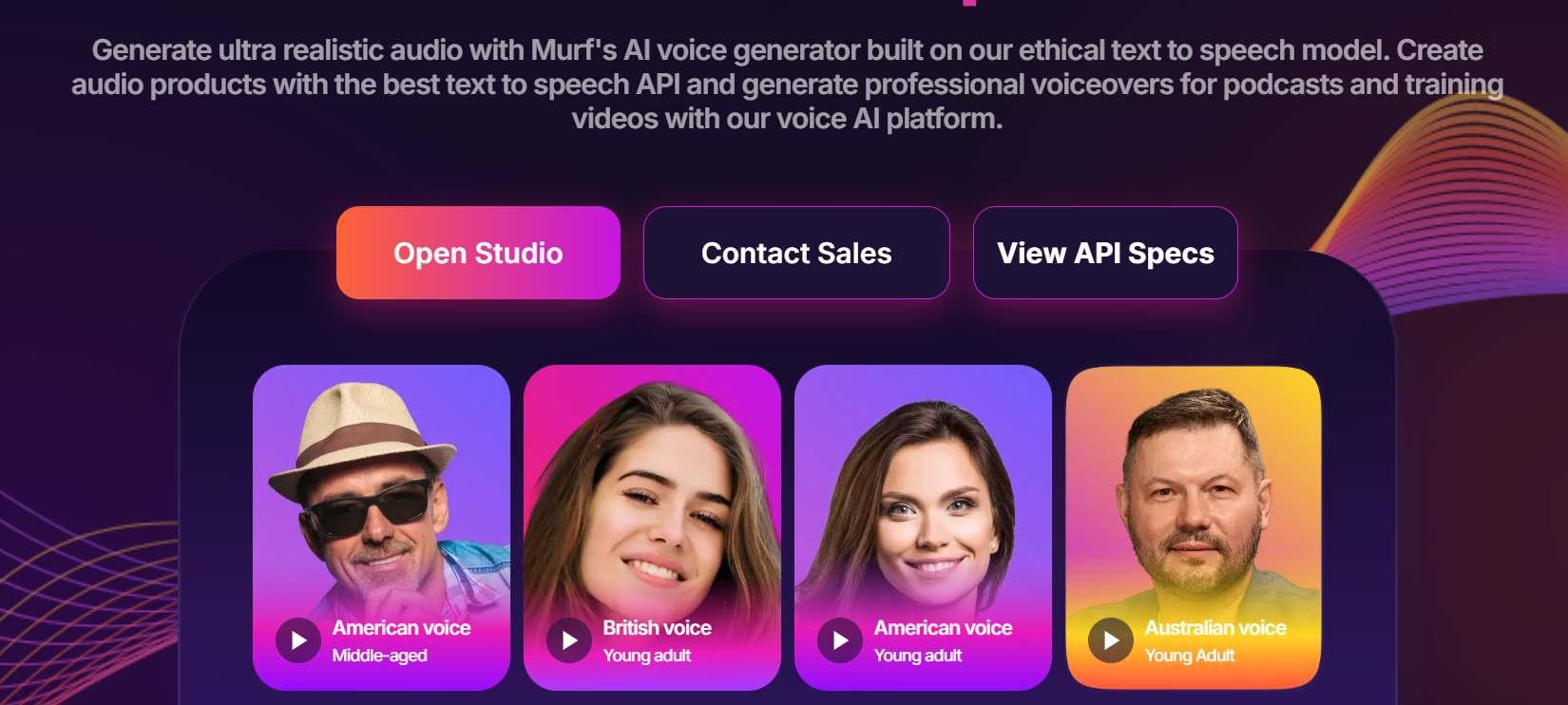
What I really appreciate is the level of customization it offers, allowing you to adjust tone, pitch, and pace to suit the content you’re working on. I’ve even used it to record marketing content and podcasts, and the results were studio-grade. The only downside for me was the lack of a free plan, but considering the quality and range of features, it’s a worthwhile investment if you need professional-grade audio.
Pros:
Studio-grade, realistic voices
Customizable features for fine-tuning voice output
Great for professional voiceovers and marketing content
Cons:
No free plan, only a trial
Pricey for full access
Best For:
Murf AI is perfect for professionals, such as marketers, voiceover artists, or content creators, who need high-quality audio. If you’re creating professional voiceovers, marketing videos, or podcasts, this tool offers the polish you need. It’s ideal for anyone in the creative industry looking to elevate their content with top-tier TTS voices.
Microsoft Azure TTS
Microsoft Azure TTS is one of the most powerful TTS tools I’ve used, especially for developers. The AI-driven neural voices are impressively natural, and the system can scale to support enterprise-level projects.
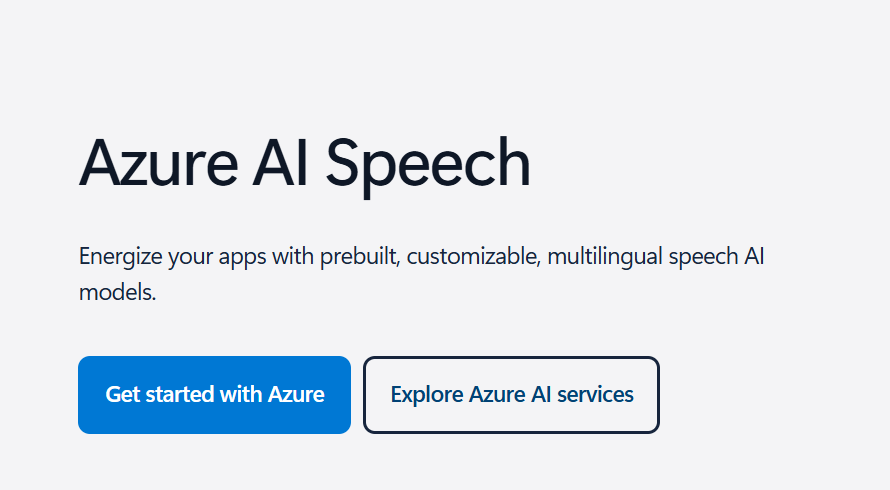
I’ve had the chance to integrate Azure TTS into some of my larger projects, and I’ve been blown away by how well it works across various applications, from accessibility tools to complex business integrations. While it requires some technical setup, the results are worth the effort. The level of customization is top-notch, and it supports over 100 languages, making it ideal for global applications.
Pros:
AI-powered, highly natural voices
Supports 100+ languages
Excellent for large-scale, enterprise-level projects
Cons:
Requires a technical setup
Not as user-friendly for non-developers
Best For:
Microsoft Azure TTS is best suited for developers or businesses looking for a highly customizable, scalable TTS solution. If you're working on large projects, like software or enterprise applications, or need to integrate TTS into your platform, this tool is an excellent choice. It’s perfect for tech-savvy users and organizations looking to offer a global, multilingual experience.
Comparison Table – Which TTS Reader Suits You Best?
If you’re still confused about which tool to pick. I’ve put together a comparison table.To help you choose the best text to speech reader for your needs. This will give you an easy way to see how each tool stacks up based on important features. Whether you're looking for a basic tool for casual use or a professional-grade solution, this table will help you make an informed decision.
| Tool | Free Plan Available | Voice Quality | Supported Languages | Best Use Cases |
|---|---|---|---|---|
| Natural Reader | Yes | Very Natural | 20+ | Casual reading, education |
| Speechify | Yes (Limited) | Top-tier | 30+ | Productivity, mobile listening |
| TTSReader | Yes | Simple & Clear | 10+ | Quick usage, browser-based use |
| Murf AI | No (Free Trial) | Studio-grade | 15+ | Voiceover creation, marketing |
| Azure TTS | Yes (with Setup) | AI neural | 100+ | Developers, enterprise integration |
Enhance TTS Output with Humanize AI by Toolsmart
Even the best TTS tools can’t fix robotic or unnatural text. One of the biggest issues I’ve found with robot text to speech tools is their inability to narrate content in a more human-like manner with proper emotion and flow, just like how your teacher would explain a concept or how a friend would speak to you. When I’m working through lengthy and complex material, it’s tough to absorb all the information if the text is read in a monotone, emotionless voice. If you use a TTS reader directly, you may find it hard to follow along or truly understand, especially when you’re under pressure or have a lot to process.
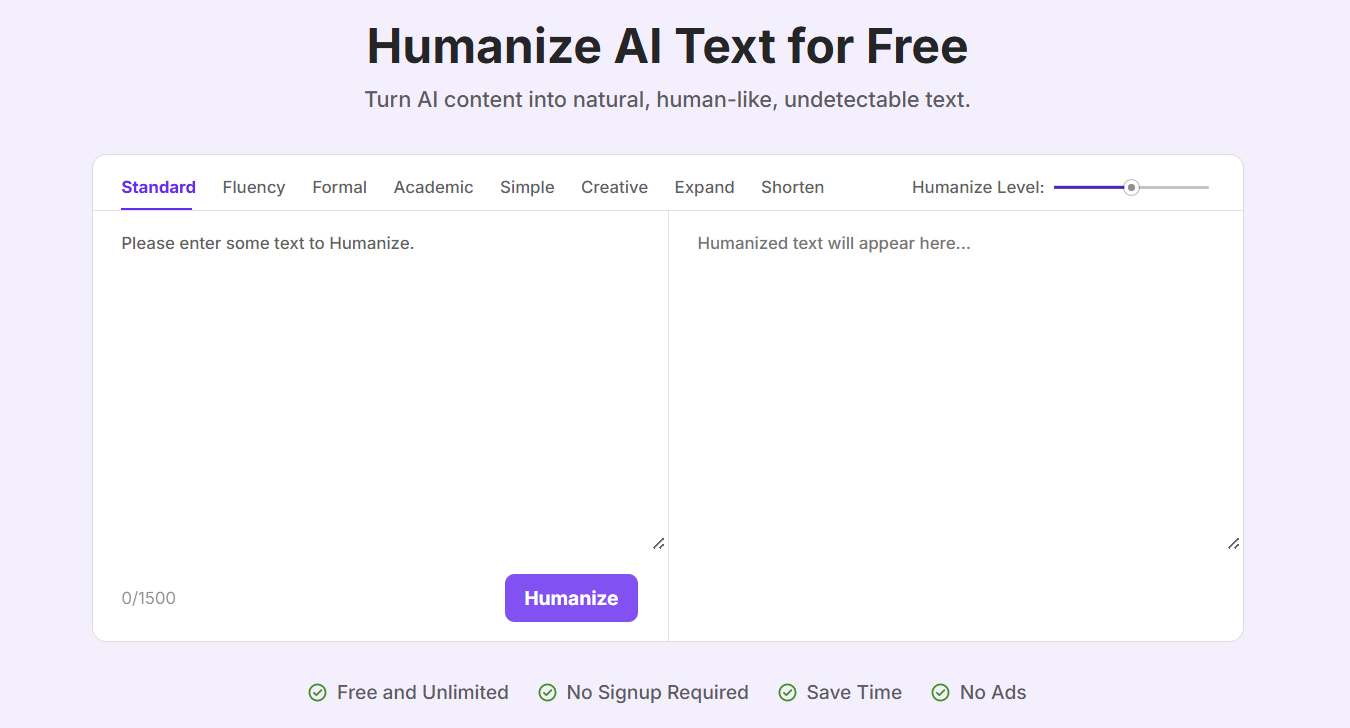
That’s where Humanize AI comes in, it can make the reading you have into a simpler and easier-to-understand text because it has multiple built-in modes. Humanize AI makes the text you paste exactly how you want it by adjusting the tone, pace, and flow of the text. I’ve used it to refine texts, and I didn’t need any complicated prompt skills. Just paste your content, and let the AIwork its magic. I remember an instance when I had a dense, 30-page document for an assignment that I couldn’t wrap my head around. Even after using the best text to speech reader, I was still struggling. Then, I combined the TTS reader withHumanize AI, and I understood the entire document in an instant, feeling like I had someone explain it to me step-by-step.
So, whether you're trying to digest a complex topic or just want yourrobot voice text to speech to sound more natural and engaging, Humanize AI is a simple yet effective way to enhance the output and make learning or understanding easier. I highly recommend giving it a try.
FAQs
Q1: What is the best text to speech reader for natural voices?
If you’re looking for a TTS reader that sounds more human-like,Speechify and Microsoft Azure TTS are both top choices. I've used both, and they offer voices that really sound like actual people talking, not robots. Speechifyhas the edge for general use, but if you need something for more serious, enterprise-level applications, Azure TTSdelivers impressive AI neural voices.
Q2: How many languages do these text to speech tools support?
It depends on the tool, but here’s the rundown: Microsoft Azure TTS leads the pack with over 100 languages, which is great if you need a global reach. Speechify supports over 30 languages, and Natural Reader covers about 20+. If you’re just using it for basic content, this should be more than enough, but if you’re working on international projects, Azure’s got you covered.
Q3: What are the best free text to speech readers available today?
There are some great free options! Natural Readeroffers a solid free version with decent voices, andTTSReader is completely free and works right from your browser. Speechify has a limited free plan, but it’s still worth checking out if you want a taste of its top-tier voices. If you’re just starting out or need something simple, these free plans should do the trick.
Q4: What features should I look for when choosing a text to speech reader?
The main things to focus on are voice quality (you want it to sound natural, right?), language support (especially if you need more than one language), and ease of use (don’t make it harder than it needs to be!). Also, check if it has a free plan if you’re on a budget. Lastly, customization options, like adjusting speed or pitch, can make a big difference in how enjoyable the experience is.
Q5: Do I need to pay to use Toolsmart’s Humanize AI?
Nope, Humanize AI is completely free to use! There’s no sign-up required, no ads, and no watermarks; everything is fully accessible at no cost. I’ve used it a ton myself, and it’s really helpful when you want to make your TTS content sound more natural. So, it’s a no-brainer if you’re looking to enhance your TTS output without paying a dime.
Choosing the Right Text to Speech Reader for Your Needs
In conclusion, finding the best text to speech reader that matches your needs is crucial for maximizing your productivity and creating content that resonates with your audience, and don’t forget to enhance your TTS output with Toolsmart Humanize AI for that extra human touch.

